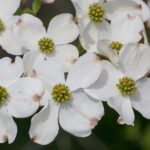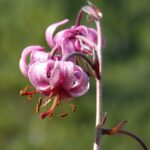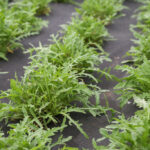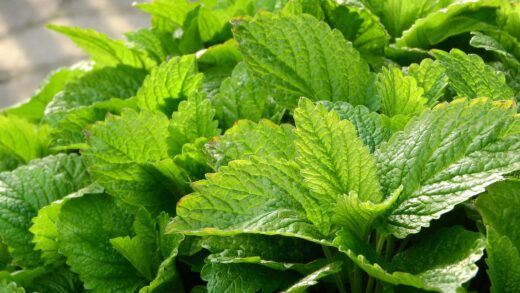Diseases and pests of the regal pelargonium

Maintaining the health of a regal pelargonium is largely a matter of proactive prevention, as it is always easier to stop problems from developing than it is to cure them. The most effective disease prevention strategy is to provide an environment that is inhospitable to common pathogens, most of which are fungal in nature and thrive in damp, stagnant conditions. Central to this strategy is ensuring excellent air circulation around the plant. Avoid overcrowding your plants and, if growing indoors, consider using a small fan to keep the air moving gently, which helps to keep the foliage dry and discourages the germination of fungal spores.
Proper watering techniques are another cornerstone of disease prevention. As regal pelargoniums are highly susceptible to root and stem rot, it is essential to allow the soil to dry out between waterings and to avoid wetting the foliage. Watering the soil directly at the base of the plant minimizes the time that leaves and stems remain damp. Furthermore, you must ensure your pot has excellent drainage and that it is never left sitting in a saucer of excess water, as this creates the anaerobic, waterlogged soil conditions where root-rotting fungi flourish.
Good sanitation practices, often referred to as horticultural hygiene, are simple yet incredibly effective. Always use clean pots and sterile potting mix when planting or repotting. Regularly remove any dead leaves, spent flowers, and other debris from the soil surface and from around the plant, as this decaying organic matter can harbor disease spores and pests. When pruning or taking cuttings, always use tools that have been sterilized with rubbing alcohol or a bleach solution to prevent the transmission of pathogens from one plant to another.
The final and most fundamental step in prevention is to start with a strong, healthy plant. When purchasing a new regal pelargonium, inspect it carefully for any signs of trouble. Check the undersides of leaves for pests, look for any spots or discolouration on the foliage, and examine the base of the stems for any softness or browning. By choosing a vigorous, disease-free plant from the outset, you are giving yourself a significant advantage and reducing the likelihood of introducing problems into your home or garden.
Common fungal and bacterial diseases
One of the most frequent fungal diseases to affect regal pelargoniums is Botrytis cinerea, commonly known as grey mould. This disease thrives in cool, damp, and humid conditions with poor air circulation. It typically appears as fuzzy, greyish-brown patches on fading flowers, leaves, and stems, often starting on dead or dying tissue and then spreading to healthy parts of the plant. Prevention through good air movement and careful watering is key. If it appears, you must immediately remove and destroy all affected parts of the plant and consider applying a suitable fungicide.
More articles on this topic
Another fungal issue that can arise is Pelargonium rust, caused by the fungus Puccinia pelargonii-zonalis. While more common on zonal geraniums, it can also affect regal varieties. The most characteristic symptom is the appearance of small, yellow spots on the upper surfaces of the leaves, with corresponding raised, brown, spore-filled pustules on the undersides of the leaves. Infected leaves will eventually turn yellow and drop prematurely. To manage rust, remove infected leaves immediately, avoid overhead watering, and improve air circulation. Fungicidal sprays may be necessary for severe infections.
Bacterial blight, caused by the pathogen Xanthomonas hortorum pv. pelargonii, is a serious and difficult-to-control disease. It typically presents as small, water-soaked spots on the leaves that quickly enlarge, becoming V-shaped or circular, brown-to-black lesions. The bacteria can become systemic, moving through the plant’s vascular system and causing entire stems to wilt, blacken, and die. There is no chemical cure for bacterial blight; infected plants and any contaminated soil or pots must be destroyed to prevent its spread. Strict sanitation is the only effective control.
Root rot is not a single disease but rather a condition caused by various soil-borne fungi, such as Pythium and Phytophthora, that attack the plant’s root system. The single greatest cause of root rot is overwatering, which creates the low-oxygen, waterlogged environment these fungi need to thrive. The symptoms above ground are often misleading, including wilting, yellowing leaves, and stunted growth, which might be mistaken for underwatering. However, an inspection of the roots will reveal them to be brown, soft, and mushy instead of firm and white. Prevention through proper watering and well-draining soil is the only effective cure, as the condition is usually fatal once established.
Identifying common pests
Aphids are one of the most common sucking insects to infest regal pelargoniums. These small, pear-shaped insects, which can be green, black, or pink, tend to cluster on the most tender parts of the plant, such as new shoots, flower buds, and the undersides of young leaves. They feed by sucking sap from the plant, which can cause distorted growth, yellowing leaves, and a failure of flower buds to open properly. Aphids also excrete a sticky substance called honeydew, which can lead to the growth of sooty mould.
More articles on this topic
Whiteflies are another sap-sucking pest that can become a significant nuisance, especially in greenhouse settings or on indoor plants. These tiny, moth-like insects will fly up in a cloud when a plant is disturbed. Both the adults and their nymph stages feed on the undersides of leaves, causing stippling (small yellow spots), yellowing, and leaf drop. Like aphids, they also produce honeydew, which encourages the growth of black sooty mould and can attract other insects like ants. They reproduce very quickly, so early detection and control are vital.
Spider mites, particularly the two-spotted spider mite, can be a problem in hot, dry conditions. These pests are technically arachnids, not insects, and are so tiny that they are often difficult to see with the naked eye. The first sign of their presence is often fine, silky webbing on the plant, especially between leaves and stems. They feed by piercing plant cells and sucking out the contents, which results in a fine, stippled or speckled appearance on the leaves. In heavy infestations, leaves can turn yellow or bronze and drop off.
Mealybugs are small, soft-bodied insects that are easily identified by the white, waxy, cotton-like substance that covers their bodies and egg sacs. They typically hide in protected areas of the plant, such as in the axils where leaves join the stems or on the undersides of leaves. They are sap-feeders that can cause stunted growth and leaf drop. Their feeding also produces honeydew, leading to sooty mould issues. Their waxy coating provides them with protection from many contact insecticides, making them particularly difficult to eradicate completely.
Integrated pest management (IPM)
Integrated Pest Management, or IPM, is a holistic and environmentally sensitive approach to dealing with pests that prioritizes the least toxic methods first. The first line of defense in an IPM strategy is always mechanical and cultural controls. This includes actions like hand-picking larger pests, wiping off insect colonies with a damp cloth, or using a strong spray of water from a hose to dislodge pests like aphids and spider mites from the plant. Cultural controls involve the preventative measures already discussed, such as providing good air circulation and proper watering to create a healthy plant that is naturally more resistant to pests.
If mechanical and cultural controls are not sufficient, the next step is to use biological or less toxic chemical solutions. Insecticidal soaps and horticultural oils (like neem oil) are excellent options for controlling soft-bodied insects such as aphids, mealybugs, whiteflies, and spider mites. These products work by smothering the pests or disrupting their cell membranes and are most effective when applied thoroughly, ensuring complete coverage of all plant surfaces, especially the undersides of leaves. They have low toxicity to humans and pets and have minimal impact on beneficial insects when used carefully.
Encouraging or introducing beneficial insects is a key component of a robust IPM program, particularly in an outdoor garden setting. Natural predators such as ladybugs, lacewings, and parasitic wasps can be incredibly effective at controlling pest populations. Ladybugs and their larvae are voracious predators of aphids, while lacewing larvae consume a wide range of pests. By avoiding the use of broad-spectrum chemical pesticides that kill these beneficial insects, you can help to establish a natural balance in your garden where pest populations are kept in check by their predators.
The use of conventional, broad-spectrum chemical pesticides should always be a last resort in an IPM plan. These chemicals can be effective, but they often kill beneficial insects along with the pests, can lead to the development of pesticide-resistant pest populations, and can pose risks to the environment and human health. If chemical intervention is deemed necessary, it is important to choose a product that is specifically labeled for use on pelargoniums and for the target pest. Always read and follow the label instructions carefully, including all safety precautions.
Treatment strategies and recovery
When a fungal disease like grey mould or rust is identified, the immediate first step is to carefully remove and dispose of all infected plant parts. This reduces the number of fungal spores and helps to prevent the disease from spreading further. You should then treat the rest of the plant with an appropriate fungicide, ensuring complete coverage. For many fungal issues, improving environmental conditions by increasing air circulation and reducing humidity is a critical part of the long-term treatment and recovery plan.
For insect infestations, the treatment strategy depends on the pest. For localized infestations of aphids or mealybugs, you can spot-treat by dabbing the pests with a cotton swab dipped in rubbing alcohol, which kills them on contact. For more widespread problems, a thorough spraying with insecticidal soap or neem oil, repeated every 5-7 days for several weeks, is often effective. It is vital to be persistent, as these treatments only kill the pests they directly contact, and repeat applications are necessary to control newly hatched insects.
Whenever you are dealing with a pest or disease issue, it is a wise practice to isolate the affected plant from any other healthy plants you may have. This quarantine prevents the problem from spreading. Move the infested or infected plant to a separate room or a different part of the garden while it is undergoing treatment. Keep the plant isolated for at least a few weeks after you believe the problem has been eradicated to ensure there is no recurrence before reintroducing it to your other plants.
After a plant has been successfully treated for a pest or disease infestation, it will need some time and supportive care to recover its health and vigor. Ensure it has optimal growing conditions, including the right amount of light, water, and nutrients, but be careful not to over-fertilize a stressed plant. Prune away any heavily damaged leaves or stems to encourage fresh, healthy new growth. With proper care and attention, most regal pelargoniums can make a full recovery and return to their former glory.
📷Velq1958, CC BY-SA 3.0, via Wikimedia Commons


















